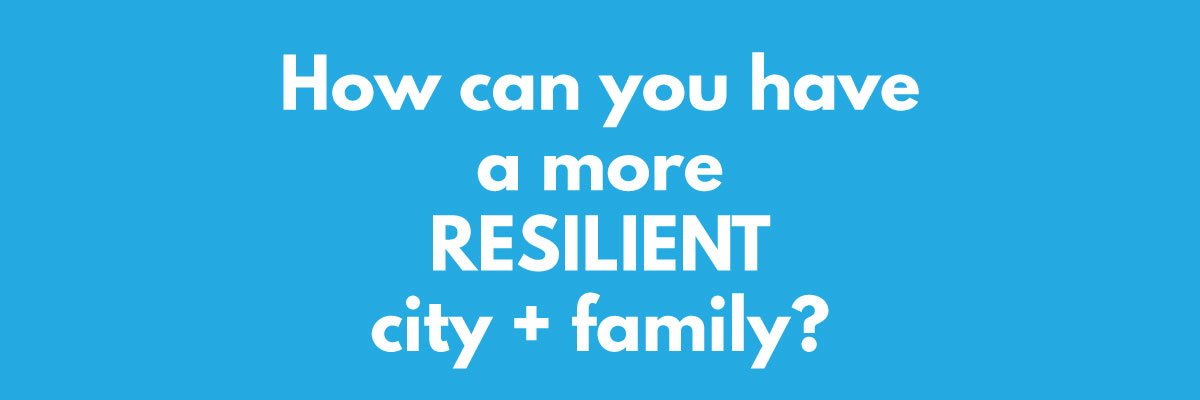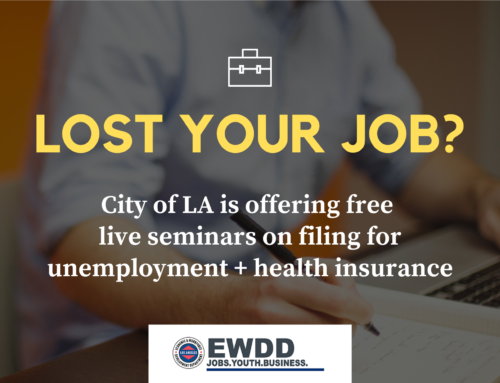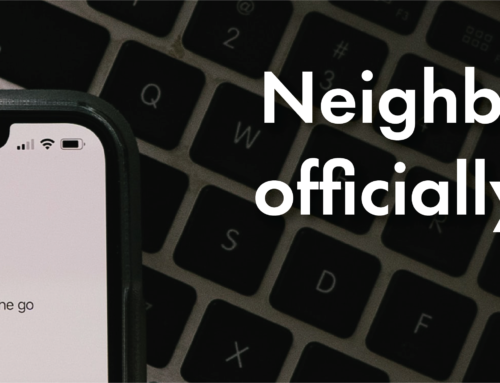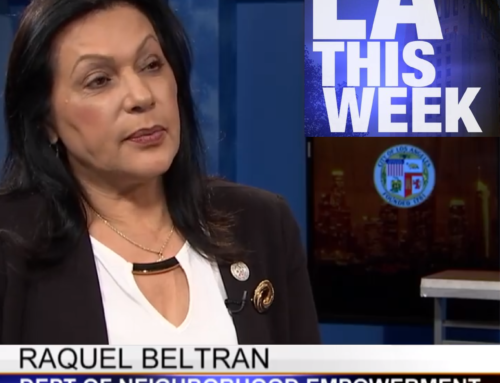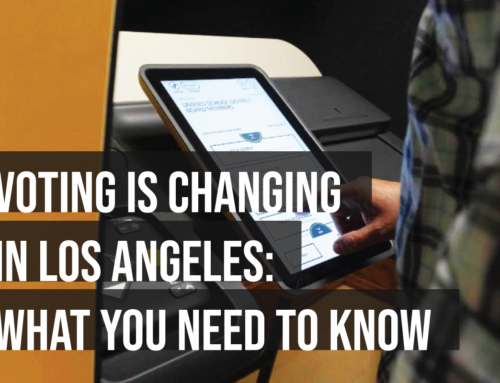story and photos by Aparna Mukherjee
Expect the Unexpected: Building a Resilient LA, Block by Block
Imagine surviving a natural disaster with no cell phone and being forced to live in your backyard for weeks, awaiting word on if it’s safe for you and your family to sleep in your house again. For EmpowerLA’s John Darnell, the scenario isn’t hypothetical; it’s his memory as a 13-year-old after the 1994 Northridge earthquake with its epicenter in the San Fernando Valley left 57 dead and more than 8,700 injured.
“You might see it in the movies or on TV as an end of days scenario. But it’s real and it really happens,” says the former Council District Director.
That firsthand knowledge drives John to spread the word and educate fellow Angelenos on neighborhood preparedness, now a part of his job as EmpowerLA’s Resilience Officer. It’s a role that every City department designates, a key staffing and outreach component of the Mayor’s newly launched Resilient LA plan.
Resilient LA
LA’s first Chief Resilience Officer (CRO) Marissa Aho joined John, EmpowerLA GM Grayce Liu, and more than 45 Neighborhood Council and community leaders on Tuesday for a Civic U evening dedicated to how to prepare for the unexpected – and what each NC is doing to prepare for the emergency with the greatest potential effect and consequences.
Building a more resilient Los Angeles starts with addressing the needs of our most vulnerable populations and neighborhoods,” the starting point of the strategy, part of a broader 100 Resilient Cities (http://100resilientcities.org/strategies/los-angeles/) program, linking cities across the country. “When disaster strikes, we know that recovery starts in our local communities and networks.”
The Resilient LA (https://www.lamayor.org/Resilience, in English and Spanish) plan’s four chapters covering safety, interconnectedness, technology preparedness, and partnerships, details 96 actions to cope with inevitable shocks and stresses, ranging from earthquakes and wildfires to homelessness and the effects of climate change.
“We have up to six million people during the day within the city limits,” says City Emergency Management Coordinator Crisanta Gonzalez. “We have our volunteer first responders but we have less than 14,000 firefighters and police officers who are going to be able to come to your neighborhoods.”
Emergency Management and RYLAN
For the Emergency Management Department (EMD), the watchword is RYLAN, Ready Your LA Neighborhood, (http://emergency.lacity.org/rylan), a successor to its “5 Steps to Neighborhood Preparedness” program.
The coordinator for the Valley, one of four outreach roles covering Los Angeles’ 471 square miles, points to the numbers from seismologists: The next “big one” is projected to be a 7.8 or higher, and she points to researchers who project approximately 1,800 fatalities and more than 50,000 fatalities from when (“not if”) that strikes.
What should we do in the face of daunting numbers like that? Per EMD and Crisanta’s training, the number one thing is prepare, including knowing the answers to these questions, posed to this week’s audience gathered at LAPD’s Deaton Civic Auditorium:
- How many of you have a go kit ready under your bed?
- How many of you have a go bag in your car?
- How many of you commuting by train or bus have a go kit in your backpack?
- How many of you have communicated with your spouse or kids about where to meet?
- How many of you have talked to schools about picking up your kids?
Answering the questions and starting the conversation is the first step. Find and follow next steps for your family and household from EMD below.
And look for our follow-up posts with details on the challenges and opportunities shared at the event by Neighborhood Council leaders, how to best Map Your Neighborhood, including the “Cool Block” (https://www.ncsa.la/cool_blocks_la) initiative, presented by Silver Lake’s Lisa Hart and spearheaded by the Neighborhood Council Sustainability Alliance.
Start an emergency kit
- Water: 1 gallon per person or pet per day (plan for 3-7 days)
- Food: 3-7 day supply of non-perishable foods like granola bars, crackers, peanut butter, and canned food (plus, a manual can opener!), pet food, and baby formula
- Battery-operated or hand-crank radio
- Flashlight and batteries
- Whistle to signal for help
- Duct tape and plastic sheeting
- Hygiene supplies, toilet paper, wet wipes, garbage bags
- Tools:Shut-off wrench for gas lines, hammer, pliers, shovel, axe, work gloves
- Local maps
- Blankets and sleeping bags
- Extra clothes and good shoes
- Medications and spare or old eyeglasses
Start your family emergency communication plan
Disasters rarely happen at an ideal time. Your family might not be at home or together when disaster strikes, so it’s important to have a plan for how to communicate if you are separated during a disaster.
Sit down with your family today to talk about how you will connect and communicate during a disaster. The Federal Emergency Management Agency (FEMA) has easy to use planning templates. Click here to download the planning templates or visit https://www.fema.gov/media-library/assets/documents/108887.
Start receiving emergency alerts
NotifyLA is the City of Los Angeles emergency notification system, and it’s our best way to communicate with you during emergencies and disasters. It’s free and easy to sign up! Text READY to 888-777 or go to http://www.emergency.lacity.org/notifyla.


